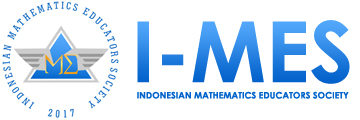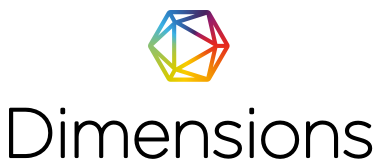Students’ Algebraic Thinking Skills Through Creative Problem Solving Learning Models
DOI:
https://doi.org/10.35706/sjme.v8i1.10796Abstract
This research aims to describe algebraic thinking skills in two-variable linear equation systems material through the steps of the Creative Problem Solving learning (CPS) learning model using worksheets. The research subjects were students of SMP Negeri 02 Sembawa class VIII-7 in the 2023/2024 academic year. The type of research is descriptive qualitative. The data collection techniques are written tests and interviews. Indicators of algebraic thinking skills include indicators at generational, transformational and meta-global level activities. After implementing CPS in learning, the test results showed that the percentage of students' algebraic thinking skills for generational activities in question number one was 48% and number two was 89%. For transformational activities, the percentage of students who were able to achieve them was 38% for number one and 38% for number two. Meanwhile, for meta-global level activities, the percentage of students who were able to achieve them was 45% for number one and 82% for number two. It can be concluded that the indicators of algebraic thinking skills that appear most frequently are in generational activities.
Downloads
References
Amalliyah, N., Wardono, W., & Mulyono, M. (2022). Analisis Kemampuan Berpikir Aljabar Siswa ditinjau dari Adversity Quotient. Vygotsky, 4(1), 1. https://doi.org/10.30736/voj.v4i1.420
Anggraini, D., Testiana, G., & Wardani, A. K. (2020). Pembelajaran Matematika Materi SPLDV Menggunakan Model Pembelajaran Creative Problem Solving (CPS). Suska Journal of Mathematics Education, 6(2), 119. https://doi.org/10.24014/sjme.v6i2.9124
Creative Education Foundation. (2014). Creative Problem Solving Resource Guide.
Farida, I., & Hakim, D. L. (2021). Kemampuan Berpikir Aljabar Siswa Smp Pada Materi Sistem Persamaan Linear Dua Variabel (SPLDV). Jurnal Pembelajaran Matematika Inovatif, 4(5). https://doi.org/10.22460/jpmi.v4i5.1123-1136
Harefa, D. (2020). Differences In Improving Student Physical Learning Outcomes Using Think Talk Write Learning Model With Time Token Learning ModeL. Jurnal Inovasi Pendidikan Dan Sains, 1(2), 35–40. https://doi.org/10.51673/jips.v1i2.365
Istikomah, Astuti, E. P., & Kurniawan, H. (2018). Kemampuan Berpikir Aljabar Siswa Climber dalam Menyelesaikan Masalah SPLDV. Journal of Mathematics Education. https://doi.org/10.30595/alphamath.v6i2.8117
Jailani, & Wulandari, N. F. (2017). Kemampuan Matematika Siswa Kelas VIII di Daerah Istimewa Yogyakarta dalam Menyelesaikan Soal Model TIMSS. In MIPA (Vol. 22, Issue 1). https://doi.org/10.18269/jpmipa.v22i1
Nugraha, A. A. (2018). Analisis Kemampuan Koneksi Matematis Siswa SMP pada Materi Sistem Persamaan Linear Dua Variabel (SPLDV). Suska Journal of Mathematics Education, 3(2), 130. https://doi.org/10.24014/sjme.v3i2.3897
Permendikbud. (2018). Peraturan menteri pendidikan dan kebudayaan Republik Indonesia nomor 37 tahun 2018 tentang perubahan atas peraturan menteri pendidikan dan kebudayaan nomor 24 tahun 2016 tentang kompetensi inti dan kompetensi dasar pelajaran pada kurikulum 2013 pada pendidikan dasar dan pendidikan menengah.
Pratiwi, W. D., & Kurniadi, E. (2018). Transisi Kemampuan Berpikir Aritmatika Ke Kemampuan Berpikir Aljabar Pada Pembelajaran Matematika. 1. https://doi.org/10.31629/jg.v3i1.388
Riskon, M., & Rachmani Dewi, N. (2019). Kemampuan Berpikir Aljabar Siswa Menggunakan Model Creative Problem Solving. Prosiding Seminar Nasional Pascasarjana UNNES SEMINAR NASIONAL PASCASARJANA.
Saputro, G. B., & Mampouw, H. L. (2018). Profil Kemampuan Berpikir Aljabar Siswa Smp Pada Materi Persamaan Linear Satu Variabel Ditinjau Dari Perbedaan Gender. In Jurnal Numeracy (Vol. 5). https://doi.org/10.46244/numeracy.v5i1.325
Sari, A. D., Noer, S. H., & Asmiati. (2020). Pengembangan Model Creative Problem Solving (Cps) Untuk Meningkatkan Kemampuan Berpikir Reflektif Siswa. 04(02), 1115–1128. https://doi.org/10.31004/cendekia.v4i2.318
Septripiyani, K., Novtiar, C., Siliwangi, I., Terusan Jenderal Sudirman, J., & Barat, J. (2021). Analisis Kemampuan Pemahaman Konsep Matematis Siswa Kelas VII Pada Materi Bentuk Aljabar Di Masa Pandemi Covid-19. Jurnal Pembelajaran Matematika Inovatif, 4(6). https://doi.org/10.22460/jpmi.v4i6.1709-1722
Sermatan, E., Fahinu, & Zamsir. (2019). Peningkatan Kemampuan Penalaran Aljabar Siswa Melalui Problem Based Learning Dan Konvensional Pada Siswa Madrasah Tsanawiah (Improvement Of Algebraic Reasoning Ability Students Through Problem Based Learning And Conventional Madrasah Students On Tsanawiah). https://doi.org/10.36709/jpm.v9i1.5760
Silma, U. (2018). Analisis Kemampuan Berpikir Aljabar Siswa Dalam Model Pembelajaran Learning Cycle 5e. 5(3), 300–319. https://doi.org/10.37630/jpm.v13i3.1117
Suparya, I. K., I Wayan Suastra, & Putu Arnyana, I. B. (2022). Rendahnya Literasi Sains: Faktor Penyebab Dan Alternatif Solusinya. Jurnal Ilmiah Pendidikan Citra Bakti, 9(1), 153–166. https://doi.org/10.38048/jipcb.v9i1.580
Suraji, Maimunah, & Saragih, S. (2018). Karakteristik Instrumen Penilaian Hasil Belajar Matematika Ranah Kognitif yang Dikembangkan Mengacu pada Model PISA. Suska Journal of Mathematics Education, 3(2), 130. https://doi.org/10.24014/sjme.v3i2.3897
Utami, R. E., Ekawati, C., & Handayanto, A. (2020). Profil Kemampuan Berpikir Aljabar Dalam Memecahkan Masalah Matematika Ditinjau Dari Gaya Kognitif Reflektif Siswa SMP. Jurnal Ilmiah Pendidikan Matematika, 5(1). https://doi.org/10.26877/jipmat.v5i1.5502
Wahyuni, R., Mariyam, & Sartika, D. (2018). Efektivitas Model Pembelajaran Creative Problem Solving (CPS) Dalam. In Jurnal Pendidikan Matematika Indonesia (Vol. 3). https://doi.org/10.26737/jpmi.v3i1.520
Downloads
Published
How to Cite
Issue
Section
License

This work is licensed under a Creative Commons Attribution-ShareAlike 4.0 International License.
Authors who publish with this journal agree to the following terms:
- Authors retain copyright and grant the journal right of first publication with the work simultaneously licensed under a Creative Commons Attribution License that allows others to share the work with an acknowledgment of the work's authorship and initial publication in this journal.
- Authors are able to enter into separate, additional contractual arrangements for the non-exclusive distribution of the journal's published version of the work (e.g., post it to an institutional repository or publish it in a book), with an acknowledgment of its initial publication in this journal.
- Authors are permitted and encouraged to post their work online (e.g., in institutional repositories or on their website) prior to and during the submission process, as it can lead to productive exchanges, as well as earlier and greater citation of published work (See The Effect of Open Access).










